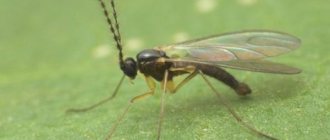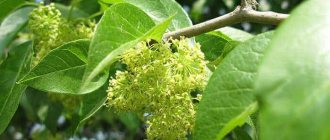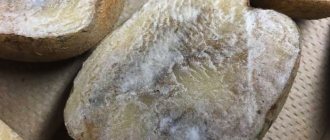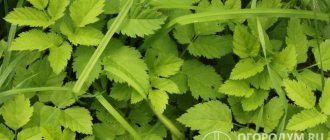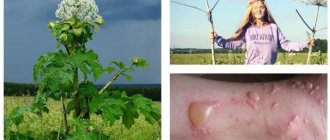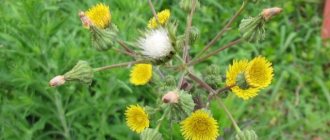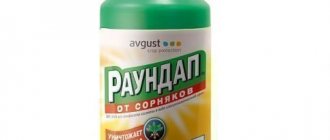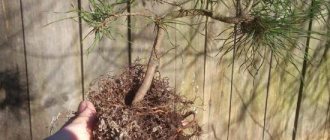What do they look like?
The body of a slug consists of three parts - the head, the body with a mantle and the leg. The body is elongated, slightly flattened from top to bottom. The head is raised and clearly visible, it carries two pairs of tentacles - long, on which the eyes and olfactory receptors sit, and short labial, used for touch and taste. There is a mouth on the front of the head.
Behind the head on the back there is a convex “collar” - this is a mantle, inside of which there is a lung, and on the side on the right side there is a breathing hole. The anus is located nearby. The leg is the lower surface of the body on which the mollusk crawls.
The slug's skin is thin, bare and always covered with mucus. The integument usually has a protective color - sand, brown, gray, brown, and sometimes small white and black spots are distributed over the brown background.
Mucus helps mollusks glide, cools them, and protects them from enemies.
Dimensions vary from 20 cm to 2 mm depending on the type of slug.
banana slug
Big slug
naked slug
Red roadside
forest slug
Slugs are not the only garden pests. We have prepared for you a series of articles about the most common harmful insects living in the garden and summer cottages. Read all about spider mites, Colorado potato beetles and moths.
Mechanical methods
The most common and simple, but labor-intensive and time-consuming way to combat snails and slugs is their mechanical collection and destruction.
Traps and bait
You can make a slug trap with your own hands from available materials, simple food products or waste. So, beer is an excellent bait for slugs. To lure pests, an open can of drink is buried in the garden bed. The mollusks actively crawl in response to the smell and fall into the trap. You can use corn flour using a similar principle.
Fermented milk products help get rid of slugs. They coat wooden surfaces outdoors and leave them overnight in damp places, under stones. Pests crawl to the smell and remain trapped. And in the morning they are collected and destroyed.
Important! You can use grapefruit peels as bait for shellfish.
Collecting slugs by hand
The fastest, but very labor-intensive way to remove slugs from an area is to physically collect them by hand. Work only with gloves. You can also use tweezers. Collection is best done early in the morning.
The manual option of exterminating unwanted living creatures in the garden is effective only when the pests have not spread very widely throughout the area. Otherwise, more effective methods should be adopted.
Creating a barrier
Artificially created barriers will help protect beds from parasites. You can use plastic bottles and glass objects as them. Mollusks will not be able to crawl onto them and will not be able to penetrate the territory.
An insurmountable obstacle for slugs will be high wooden surfaces, over which the mollusks will not be able to climb. You can also scatter picked nettles on the beds.
Egg shells scattered on the beds will be a good barrier. Its sharp edges can injure a mollusk's leg. It is also useful to sprinkle the soil with coffee grounds, lime, and mustard. But when using such substances there is a risk of oversaturating the soil and reducing its fertility.
Hedgehogs are excellent living barriers. They eat slugs, preventing them from breeding in the area. You can feed hedgehogs if you regularly leave them saucers of milk in the garden beds.
How do they reproduce?
Let's talk about how slugs reproduce. They are hermaphrodites by nature, each individual carrying both male and female reproductive systems. But to lay eggs , cross-fertilization is necessary, so the slugs find each other by smell, and after a short mating dance, which can be an interesting sight, they exchange sperm.
After this, each lays 20-30 eggs in moist soil. After 2-3 weeks, small slugs emerge, which first feed on soil organic residues, and after 1.5 months they grow and begin to reproduce. After a single mating, egg laying continues for a month or longer. Over the summer, each slug can lay up to 500 eggs.
In the middle zone, adult slugs, having laid their eggs for the last time, die in the fall. The eggs overwinter, the young hatch in early June, and after a month of active feeding they begin to reproduce.
The life cycle, like the development cycle, can accelerate or slow down depending on the weather. Sometimes slugs that do not have time to lay eggs in the fall overwinter in the soil and begin laying eggs in the spring.
Biological control agents
The parasitic nematode is a natural enemy of slugs. The microscopic worm is not dangerous for warm-blooded animals; it only kills shellfish. The pest settles into the host’s body and gradually destroys the livestock on the site. If the biological agent copes with the task, the slug will soon die. Attracting hedgehogs and frogs, birds and ground beetles helps reduce the number of individuals in the garden.
Phyto-control means
Farmers plant crops on the plot that are unpleasant to parasites. Dense beds repel shellfish and become a natural barrier for cabbage, potatoes and berries. Slugs do not like spicy plants, spices and crops with a pronounced odor:
- garlic;
- parsley;
- sage;
- marigold;
- laurel
Chemical Controls
There is no universal remedy that quickly destroys slugs. Pests are immune to many poisons, so you need to choose a suitable recipe. Shellfish are killed by slaked lime, iron sulfate and bleach. Powder from the listed substances destroys delicate skin.
What do slug eggs look like?
No deeper than 3 cm in fertile, moist soil in autumn you can see piles of white, translucent eggs with a diameter of 1-2 mm.
Laying slug eggs
Homeland, habitat, appearance (morphology)
A slug is a land gastropod without a shell, which is related to the snail. The pest can be recognized by its shapeless elongated body with a leg. The flattened body, due to strong muscles, can take any shape. The size of the creature does not exceed 3 cm in length.
A prominent head with two tentacles carrying the organs of vision, touch and smell. The grater-shaped tongue is covered with several rows of small, hard teeth. Slugs feed on juicy fruits, vegetables and foliage. Digested food exits through the anus into the torso. There is a special mantle with a lung on the back, and a breathing hole on the side.
The color of the pest ranges from nondescript gray to light brown and dirty yellow. Mucus on the skin is an important fluid that helps with movement, protects against predators, and maintains the body's microclimate. The substance spreads from the leg to the edge of the body.
Slugs are active at night, early morning and during precipitation. The sun quickly dries out the integument, so in the heat the pest hides in the shade (under stones, in lowlands). The species prefers to live in conditions of high humidity:
- with close groundwater;
- in river floodplains.
Pests without a protective shell are at the mercy of nature. Slugs breathe over the entire surface of their body, so drying out can lead to death. Moderate temperatures within +15-19 °C are favorable. During dry seasons, individuals hibernate, protecting their bodies with a thick sticky cocoon.
Habits
Slugs, without a protective shell, are most dependent on humidity and temperature. The optimal temperature range is 15-19 degrees. Abundant humidity is also optimal, because slugs breathe not only through the lungs, but also through the surface of a wet body, so drying out leads to death.
That's why these gastropods are nocturnally active. During the day, after rain, they can also come out of hiding. During dry summers, they go into the soil and hibernate temporarily in a cocoon of mucus.
For the same reason they love dense thickets. So pulling weeds and loosening the soil makes their life more difficult.
Slugs crawl well, because they have a leg with strong muscles, and they also retract their tentacles and curl into a ball when in danger.
What do slugs eat, why and where do they come from, as well as who eats slugs in nature , read on.
Diet and harm to the garden
Most varieties of this mollusk cause enormous harm not only to gardeners and gardeners, but also to the entire agriculture industry in general. They feed on more than 150 types of vegetables and fruits; they love not only root vegetables, but also foliage and shoots of plants. They give preference to potatoes, beans, cucumbers, strawberries, tomatoes and many other vegetables, fruits and berries. But they avoid garlic, onions, mustard and basil.
Very often, entire grape and citrus plantations are under threat of destruction from this pest. Rye and winter wheat are often affected by slugs. They feed not only on grains, but also on seedlings. They avoid buckwheat, flax and spring wheat.
This is a real disaster for gardeners, as they spread incredibly quickly in the garden. And all because:
- lay dozens of eggs;
- develop rapidly to reproduce;
- are hermaphrodites and do not need a partner.
Slugs are a source of viral, bacterial and fungal diseases. For this reason, the entire crop often perishes. Crawling from one place to another, they spread the infection everywhere. They spread diseases such as:
- cabbage spot;
- potato late blight;
- downy mildew of beans.
These diseases will be destructive to the crop. They will not leave aside the ornamental plants on the site. These voracious mollusks eat everything from seeds to roots and leaves. They are most active at night. They like to appear after the rain. Slugs are carriers of parasites. Pets are at risk of becoming infected with different types of helminths.
There can be many reasons for the mass spread of a pest:
- not very cold winter;
- rainy summer;
- wet but warm autumn;
- early spring.
It's difficult to fight them. It is better to take preventative measures. If slugs appear, you must get rid of them immediately, otherwise the harvest cannot be saved.
Where do they come from in the garden?
The reasons for their appearance in the garden may be the following. Slugs live in nature, maintaining the ecological balance of forest and field communities.
From there they willingly switch to cultivated plants, using more than 150 species for food. They can be brought into the garden with new, infected plants.
Reproduction of slugs can become widespread under favorable conditions, these are:
- warm wet spring;
- not hot rainy summer;
- warm, humid autumn;
- mild winter.
Methods for preventing the appearance of slugs on the site and in the apartment
The best protection for a plot of land is competent gardening. The following measures help strengthen plants to increase resistance to pest and disease attacks:
- the use of methods and means of increasing soil fertility;
- improving the quality of land structure;
- correct selection of plants, their thoughtful combination, rotation of vegetable crops;
- timely gardening work and sanitary and hygienic measures;
- attracting birds and other beneficial fauna for natural pest control.
To prevent slugs from appearing in the garden or vegetable garden, do the following:
- Make conditions unbearable for pests - deprive them of their home by removing stones, weeds, and grass from the area.
- Dry the wettest areas of the ground.
- When planting cultivated plants, keep your distance.
- Periodically cut off the lower leaves and thin out the plantings.
- Dig up the soil: shellfish love to live in cracks.
To prevent slugs from appearing in an apartment or house:
- Maintain hygiene in the wettest areas - the bathroom, toilet and kitchen;
- try to keep these rooms as dry as possible;
- find all the cracks and holes in the floor and walls and seal them.
What do they eat?
Many slugs eat mushrooms and plant debris, but they prefer fresh, juicy parts of plants, vegetables and berries, so the slug eats first. They eat mainly the healthiest plants.
In their mouth they have a jaw with a sharp chitinous edge and a tongue lined with chitinous teeth - a grater or radula. By grinding plants, they leave noticeable marks in the form of cuts with smooth edges or depressions in the tubers of potatoes and other vegetables.
Not only can slugs destroy crops, but they can also introduce mold, bacterial and viral infections. If you are interested in the question: Do chickens or frogs eat slugs? Then read below.
Some species of slugs are intermediate hosts of worms, parasites of poultry. Therefore, it is not recommended to feed slugs to geese, chickens and other poultry.
And the thick layer of mucus that covers the plants after their raids pollutes and leads to rotting.
There are plants that slugs eat first (some can be used as bait):
- cabbage;
- lettuce (until it sprouts and becomes bitter);
- strawberries;
- rape;
- dandelion;
- shepherd's purse;
- woodlice;
- cruciferous vegetables (except mustard).
Varieties of slugs
Slugs prefer damp places. If the soil is dry, they die or become buried in the ground. Very often they can be found in the forest or in the garden. An excellent place for them is thickets of bushes. They can also live in the far corners of parks, where there is a body of water nearby. They feed on leaves, mushrooms, berries and flowers. Some species feed on worms. They cannot live in hot places. These mollusks are not found in deserts.
There are many types of slugs. Many of them are pests. The most common are:
- large roadside;
- black;
- banana;
- nautical;
- malakolimax gentle;
- giant blue;
- reticulate;
- field;
- smooth.
In nature, there are several hundred species of this mollusk.
What do they not like and what are they afraid of?
Slugs do not tolerate direct sunlight, dryness and elevated temperatures. Dry soil is the scourge of slugs, which is why morning watering is recommended rather than evening watering when they start eating.
If the soil is covered with something unsuitable for crawling - sharp gravel, ash, straw or needles - it is difficult for them to move.
Slugs, having an excellent sense of smell, “cannot stand” some plants:
- onion;
- garlic;
- sage;
- oregano;
- watercress;
- geranium;
- basil;
- white clover;
- caraway;
- mustard.
Chemicals for slugs
If the slugs have spread greatly, then the most effective and sure way to remove them from the garden is to use chemicals. Their use is justified when other tested means of combating parasites have proven ineffective. The most popular drugs:
- Storm;
- Mint;
- Slug eater.
The listed products are presented in powder form and have an odor that attracts parasites. The substance is sprinkled on the beds. Product consumption is 40 g for every 10 square meters. m.
Natural enemies
There are a number of animals that are natural enemies of slugs. For them, the only benefit from slugs is getting pure protein.
Who eats slugs in nature? It will help to reduce the number of slugs by attracting helpers such as:
- magpies;
- crows;
- jackdaws;
- rooks;
- blackbirds;
- starlings;
- hedgehogs;
- moles;
- shrews;
- lizards;
- frogs;
- toads;
- ground beetles and their larvae.
Helpers will stay on your territory if they have habitat and suitable food. Birds love hedges of berry bushes and hanging birdhouses.
Insects like spicy plants, and the next link in the food chain is moles, shrews, mouse-like rodents, frogs, and toads. But all of these animals cannot tolerate the use of industrial pesticides.
If the number of pests on your site is in the nature of an invasion, then you will have to use more stringent control measures. For information on how to get rid of slugs on vegetables and berries, as well as in a cellar or basement, read the articles on our website.
It is worth noting that not only insects can cause significant damage to a garden. Some pest animals are also great at this. Read in detail in our articles about the dangers of wild rats, bats and common mice.
Control and control using gentle methods
Properly organized agrotechnical procedures will prevent the spread of invasion on the site. Pests are not afraid of chemicals and toxic substances, so it is difficult for a farmer to destroy shellfish. An integrated approach will provide protection from plant slugs and reduce the number of adult individuals.
Mechanical controls
Physical barriers make it difficult for pests to move through the beds. Farmers use special plastic gutters that are fixed around the perimeter of crop growth. If you pour water into the container, the liquid prevents slugs from entering the area.
- Dry materials with a porous structure are unpleasant for slugs, so the rows between the pests are sprinkled with crushed eggshells, shells or fine gravel. In rain, the effectiveness of the method decreases. Additional protection is provided by plastic rims with a wide curved edge. If the device is installed around plants, the access of parasites to crops worsens.
- Mechanical collection (manually, using a device) reduces the number of pests on the site. The procedure is carried out after rain, in the evening or early in the morning. Captured individuals are given to poultry or destroyed away from the garden. Regular activities reduce the number of livestock in the garden.
- Slugs die at temperatures of +40-45 °C, so farmers use hot water spraying against pests. The tender foliage of cabbage and lettuce cannot withstand boiling water. The liquid is heated to +50 °C and the affected plants are thoroughly treated. Fallen specimens are manually collected and destroyed.
Electrical controls
A covering material with a copper coating is placed on the slug bed, which releases a weak discharge of current. The delicate skin of mollusks is sensitive to electricity, so after defeat the pests will not cross the borders.
If the summer is humid, then battery-powered headbands are installed along the site.
Prevention measures
As we said above, with rare exceptions, slugs do not attack well-groomed areas. The most important measure to prevent the appearance of these pests is to keep your garden, garden or summer cottage clean and tidy.
- Remove weeds, even if they are located at the edge of your garden.
- Loosen the soil more often. Try to ensure that it has a uniform structure.
- Attract birds to your garden. But not too hard, otherwise you’ll have to drive away the birds later.
- Maintain order in the area. Do not create piles of rotten boards, remove stumps, stones, etc.
- Digging up the soil in the fall, as mollusks hide in it for the winter.
- Do not allow your area to become over-watered.
Common mistakes: what not to use
The first instinct is always to place traps and bait where slug and snail damage is most severe and where the plants are most valuable. But be careful. The enticing scent will attract slugs from all over your garden, and along the way to the desired treat are delicious, succulent plants that just need protection.
Plants are sprayed with a solution of mustard powder early in the morning, in the evening after sunset or in cloudy weather, because in bright sunshine the moisture quickly evaporates, and the mustard remaining on the leaves can cause burns.
Plants that repel slugs
Plants with aromatic essential oils repel slugs. Pests do not like strong and spicy aromas. Therefore, plants with such a smell can be used as a deterrent barrier for greenhouses, cellars, and compost heaps. They are used to compact vegetable crops or sow along the perimeter of the beds. These include:
- lavender,
- sage,
- santolina,
- thyme,
- rosemary,
- parsley,
- marigold,
- laurel,
- mustard,
- hot pepper,
- garlic.
Slugs never touch these plants. Garlic is used by manufacturers of special herbal infusions that repel slugs and snails. Infusions of garlic, hot pepper and mustard are well-known folk remedies for fighting slugs and snails.
